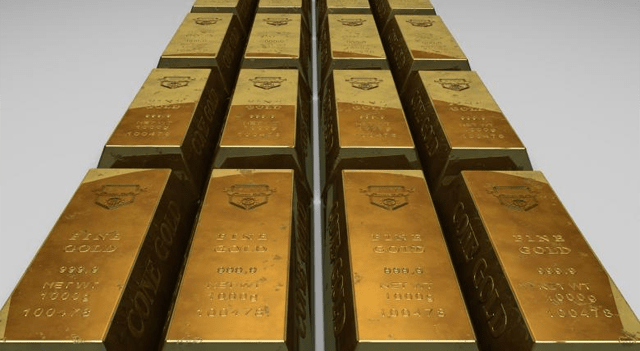Gold prices edged lower on Wednesday, easing from recent highs as investor appetite for risk increased following news of a trade agreement between the United States and Japan—dimming interest in traditional haven assets.
As of 05:05 ET (09:05 GMT), spot gold was down 0.1% at $3,429.01 per ounce, and gold futures declined 0.1% to $3,440.60 per ounce.
Trade Deal Triggers Risk-On Shift
Gold and other defensive assets faced downward pressure after President Donald Trump unveiled a new trade pact with Japan. The agreement includes a 15% tariff on Japanese goods, notably lower than the 25% rate previously floated by Trump. It also grants Japanese automakers more favorable terms, prompting a rally in Japanese equities to one-year highs.
The improved mood in equity markets reflected waning demand for gold, as investors rotated into riskier assets.
Still, losses in the precious metals complex were contained. The White House made clear that Trump’s 50% tariffs on steel and aluminum would remain in effect, providing a backstop for safe-haven flows.
Market optimism was tempered somewhat by political instability in Japan. Concerns are rising that Prime Minister Shigeru Ishiba may step down after his party suffered a significant defeat in upper house elections.
Gold Still Near Record Highs
Despite Wednesday’s modest dip, gold remains one of the best-performing assets this year. The metal is up more than 2% this week and continues to hover near its $3,500/oz peak from April. For the year, it has advanced approximately 30%, driven by fears of global economic instability, central bank stockpiling, and geopolitical tensions.
Silver, Platinum Post Weekly Gains
Other precious metals have also strengthened in recent sessions. Spot silver and platinum are both up between 1% and 3% this week, with both making modest gains again on Wednesday.
Copper Trades Mixed Amid EU-U.S. Tensions
Industrial metals were mixed. Benchmark copper futures on the London Metal Exchange fell 0.1% to $9,911.15 per ton, while COMEX copper futures rose 1% to $5.7768 per pound.
Although the U.S.-Japan agreement brought some clarity, market sentiment was unsettled by rising friction between the U.S. and European Union. The EU is reportedly preparing retaliatory tariffs in response to new American trade demands seen as excessive by European officials.
At the same time, copper market fundamentals remain volatile. According to ING, Chinese Customs data shows refined copper imports surged 15% in June versus May. In contrast, U.S. copper scrap exports to China fell to their lowest point in 21 years, with June shipments totaling under 2,000 tonnes. That’s down sharply from 14,023 tonnes in May and well below last year’s monthly average of 36,600 tonnes.
This plunge precedes the implementation of a 50% Chinese tariff on copper scrap from the U.S., expected in two weeks. As a net exporter of scrap copper, the U.S. heavily relies on China, its largest customer.
“Questions remain about the details of the upcoming copper tariffs. There are still no details on whether the duties would apply to all copper products or whether there will be any exemptions. For example, aluminium scrap is excluded from the latest tariffs,” ING noted in a report.
This content is for informational purposes only and does not constitute financial, investment, or other professional advice. It should not be considered a recommendation to buy or sell any securities or financial instruments. All investments involve risk, including the potential loss of principal. Past performance is not indicative of future results. You should conduct your own research and consult with a qualified financial advisor before making any investment decisions.
